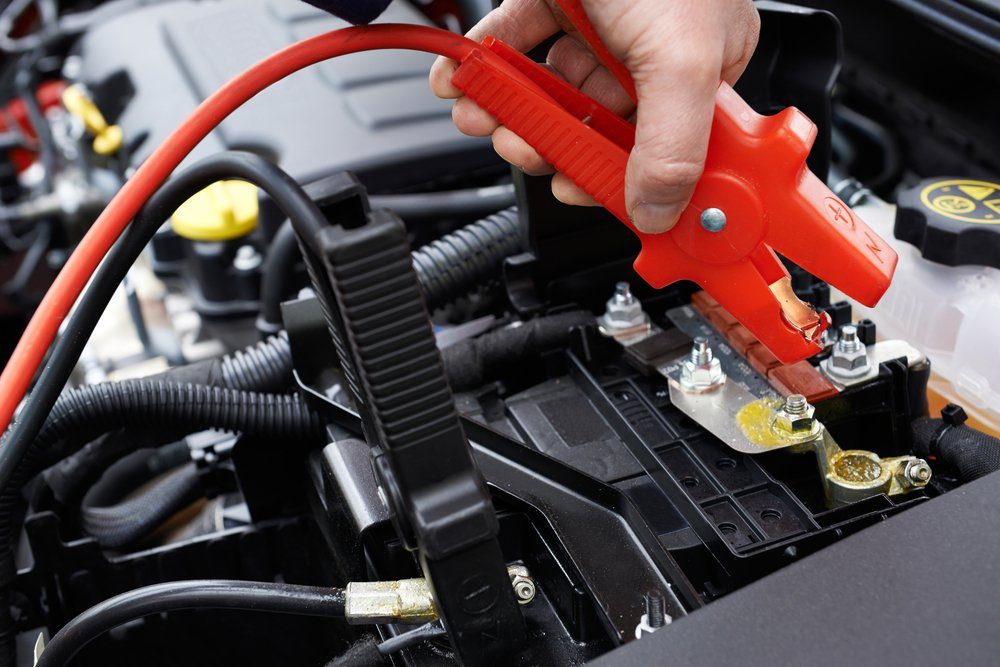Your car is dead. You try to jump-start the battery, but nothing happens. Is it the battery or something else that's the problem? Let's find out.

Why Won’t My Battery Jump?

The most common reasons for a dead battery are cold weather, age and leaving the lights on overnight. If a jump-start revives your engine, your problem was most likely just a drained battery. But if you can’t jump-start your car, the battery may be completely discharged or damaged.
“A jump start isn’t a miracle cure,” says Kevin Oliff, general manager at AutoNation BMW Buena Park. “It’s common for a drained battery not to respond to a jump start, but it could also be that the battery is completely discharged, sulfated or physically damaged. If your battery’s toast, all the jumper cables in the world won’t help.”
Here are some mechanical and electrical reasons why a car won’t start when trying a jump–start, plus how to tell if your battery is simply DOA.
But first, safety first! Always follow the steps in your owner’s manual before jump-starting any vehicle. Remember, a battery contains sulfuric acid that can cause serious burns. Always wear gloves and eye protection when working around a battery or jump-starting a car. If you come into contact with battery acid, flush with plenty of water and get medical attention immediately.

On This Page
Battery
Car batteries do not last forever. Depending on the climate and driving conditions, expect to replace your battery every three to five years. An internal short circuit or defective cell will prevent a battery from being jump-started. The only fix is a new battery.
Battery Terminals
Note the condition of your battery terminals. If the terminal connections are corroded or loose, electrical flow to the rest of the car will be restricted, so your car won’t start even with a jump. Removing the cable ends and cleaning the corrosion with a wire brush (and retightening the bolts) should restore full electrical power to your car. Often overlooked is the “ground” side of the negative battery cable, the location where it bolts to the engine block. Make sure that the connection is clean and tight as well.
Alternator
A car battery cannot meet all the needs of a vehicle’s electrical system. The alternator restores (recharges) electrical power to the battery lost when starting your car. The alternator also supplies current to the electrical accessories when the engine is running. If your lights dim excessively when stopped, or the battery light flickers on, have a professional mechanic check the condition of the alternator before investing in a new battery. A loose or slipping drive belt will also cause uneven charging and a dead battery.
Starter Motor
The starter motor needs energy from the battery to spin the motor. A defective starter cannot “crank” the engine to get it started. If you hear clicking or grinding sounds while the engine fails to turn over, that indicates a faulty starter. Your only option: The repair shop.
Neutral or Clutch Safety Switch
A safety switch keeps a car with automatic transmission from starting unless it’s in park (P) or neutral (N). On a manual transmission vehicle, the same switch requires the clutch pedal be fully depressed before the engine can start. So if the safety switch is damaged or fails, the engine can’t be jump-started.
Jumper Cables
Connecting jumper cables improperly is not only dangerous but will prevent a successful jump-start, even if the battery hasn’t completely discharged. And all jumper-cables are not made the same. Jumper cables that are too long, or not heavy enough, have excessive internal resistance or cannot carry sufficient current may not work when you need them. So invest in a set of quality jumper cables.
FAQ
What should I do after successfully jumping the battery?
Let the car run for at least 15 to 30 minutes. Ideally, drive it at highway speeds, which will better allow it to recharge vs. just letting it idle.
“Pay attention to your car over the next few days,” says Duane “Doc” Watson, a technical trainer at Bosch Mobility Aftermarket. “If it continues to start just fine, that’s a good sign. If it’s stalling or you’re having to jump it again, there’s something else going on that needs to be addressed.”
How can I know for sure that a battery is fully dead?
If your car won’t start even after a jump, or if it won’t hold a charge or the voltage drops quickly, chances are the battery is beyond repair. In that case, visually inspect it for corrosion or damage, like leaking or swelling. Next, test it with a multimeter, or have a local mechanic or auto parts store do it for you (most places will do it for free). A normal battery should be around 12.6 volts when off.
“Be sure to check your dashboard lights,” says Watson. “If the battery warning light stays on, that’s also a sign a deeper issue is at play. Car batteries usually last about three to five years, so if yours is older than that, it might be reaching the end of its life. Look for a replacement that promises to last you longer and comes with free replacement warranties should that promise not hold true.”
About the Experts
- Duane “Doc” Watson is a technical trainer at Bosch Mobility Aftermarket. He has more than 45 years of experience in automotive repair, has trained thousands of technicians and earned many industry awards, including Chevrolet Technician of the Year and Buick Service Master of the Year.
- Kevin Oliff is the general manager at AutoNation BMW Buena Park in California and has more than 20 years of experience in the automotive field.




















